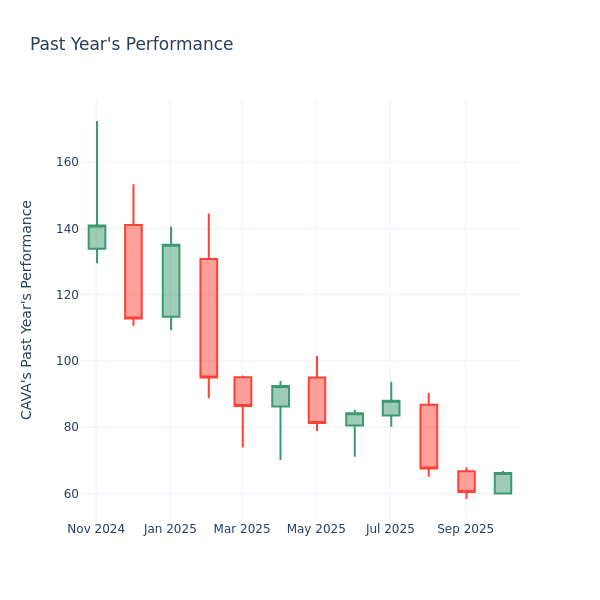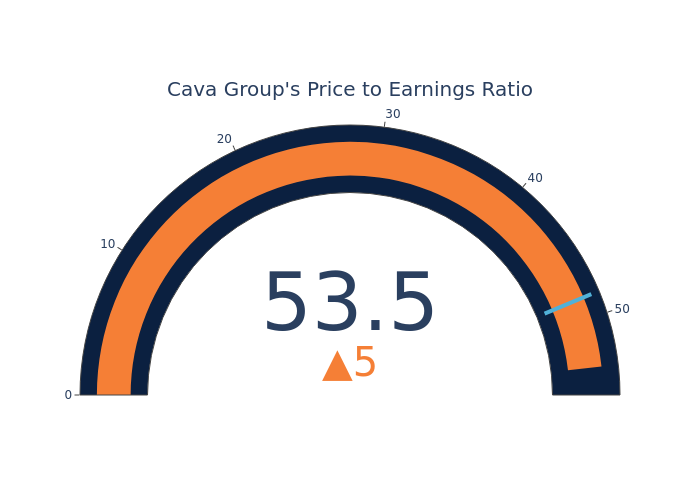P/E Ratio Insights for Cava Group
Author: Benzinga Insights | October 09, 2025 12:00pm
Looking into the current session, Cava Group Inc. (NYSE:CAVA) shares are trading at $64.24, after a 1.71% spike. Moreover, over the past month, the stock spiked by 2.87%, but in the past year, fell by 50.49%. Shareholders might be interested in knowing whether the stock is undervalued, even if the company is performing up to par in the current session.

How Does Cava Group P/E Compare to Other Companies?
The P/E ratio is used by long-term shareholders to assess the company's market performance against aggregate market data, historical earnings, and the industry at large. A lower P/E could indicate that shareholders do not expect the stock to perform better in the future or it could mean that the company is undervalued.
Cava Group has a better P/E ratio of 53.53 than the aggregate P/E ratio of 48.46 of the Hotels, Restaurants & Leisure industry. Ideally, one might believe that Cava Group Inc. might perform better in the future than it's industry group, but it's probable that the stock is overvalued.

In summary, while the price-to-earnings ratio is a valuable tool for investors to evaluate a company's market performance, it should be used with caution. A low P/E ratio can be an indication of undervaluation, but it can also suggest weak growth prospects or financial instability. Moreover, the P/E ratio is just one of many metrics that investors should consider when making investment decisions, and it should be evaluated alongside other financial ratios, industry trends, and qualitative factors. By taking a comprehensive approach to analyzing a company's financial health, investors can make well-informed decisions that are more likely to lead to successful outcomes.
Posted In: CAVA






